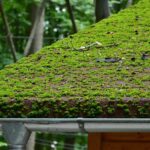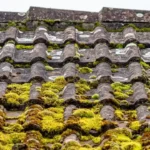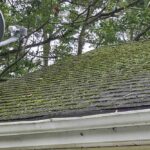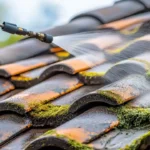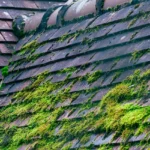When it comes to maintaining your home’s roof, choosing the best caulking for roof repairs is crucial. A well-maintained roof not only protects you from the elements but also adds to the overall value of your home. In this guide, we will explore the different types of caulking available and how they can be used effectively for roofing repairs.

Understanding Roof Caulking
Roof caulking is a sealant used to close gaps and seams on your roof. It prevents moisture from seeping into your home, which can lead to mold, mildew, and structural damage. By choosing the right caulk and applying it properly, you can extend the life of your roof and avoid costly repairs.
Types of Roof Caulking
There are several types of caulking products available for roof repairs, each with its own benefits and drawbacks. Below, well cover the most common options to help you make an informed decision.
Silicone Caulk
Silicone caulk is known for its flexibility and resistance to extreme temperatures, making it ideal for roof applications. It can last for many years without cracking or degrading, providing a durable seal that keeps water out.
Acrylic Caulk
Acrylic caulk is easy to apply and clean up, making it a popular choice among homeowners. It is less flexible than silicone but still offers great sealing capabilities for minor repairs.
Polyurethane Caulk
Polyurethane caulk is strong and versatile, adhering well to a variety of surfaces. It expands and contracts with your roof, preventing cracks and leaks over time.
How to Apply Roof Caulking
Proper application is crucial for achieving the best results from your roof caulking. Follow these steps to ensure a tight seal:
1. Prepare the Surface
Before applying caulk, clean the surface thoroughly to remove dirt, debris, and old caulk remnants. This will help the new caulking adhere properly.
2. Apply the Caulk
Using a caulking gun, apply a continuous bead of caulk along the seam or gap. Smooth the bead with a caulk smoothing tool or your finger to ensure even distribution.
3. Allow to Cure
Caulking needs time to cure, so avoid disturbing the area for the manufacturer’s recommended duration.
Common Roofing Issues Solved by Caulking
Caulking can address a variety of minor roofing problems, including gaps in flashing, leaks around chimneys, and loose shingles. Addressing these issues promptly can prevent larger problems in the future.
Flashing Gaps
Flashing is installed around roof intersections to prevent leaks. If you notice gaps, applying caulking can seal the potential entry points for water.
Leaks Around Chimneys
Chimney leaks can be sealed with a bead of silicone or polyurethane caulk, ensuring the area remains watertight.
Loose Shingles
For loose or curling shingles, a dab of caulk can secure the edges and prevent wind damage. For more details on handling this issue, check out this expert guide.
Benefits of Using Quality Roof Caulk
Investing in high-quality caulking materials offers numerous benefits:
Longevity
Good caulks can extend the lifespan of your roof by efficiently keeping water and debris out.
Cost-Effective
Tackling minor repairs with caulking can save you money on more extensive repairs by preventing damage escalation.
Where to Find the Best Products
While many hardware stores carry a selection of caulking products, shopping online can also provide access to customer reviews and competitive pricing. Ensure to purchase from reputable brands to guarantee quality.
Conclusion
Choosing the best caulking for roof repairs is an essential task for any homeowner dedicated to maintaining the integrity of their home. By understanding the types and application processes of roof caulking, you can ensure your roof remains in good repair for years to come. Additional tips and strategies for maintaining your roof can be found in this helpful roofing maintenance guide.

FAQs
How Do I Choose the Right Caulk for My Roof?
Consider the material of your roof, climate conditions, and problem areas when selecting a caulking product.
How Often Should Roof Caulking Be Reapplied?
It depends on the type of caulk used and exposure to environmental elements. Inspect your roof annually to decide if reapplication is necessary.
Can I Use Caulking to Fix All Roof Leaks?
While caulking is excellent for small gaps and cracks, larger leaks may require professional repair services. For example, addressing issues like minor roof sagging can be complex.
This article contains affiliate links. We may earn a commission at no extra cost to you.




